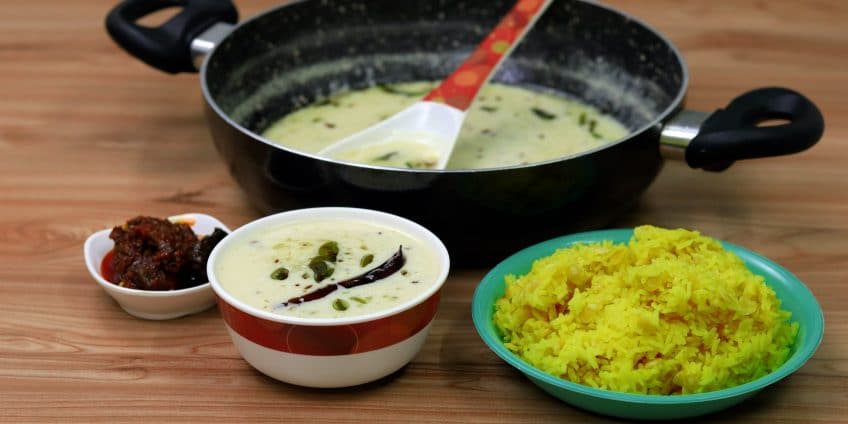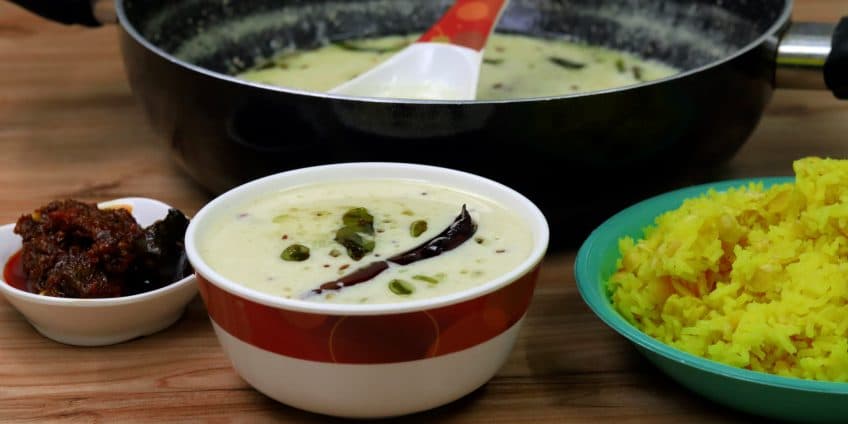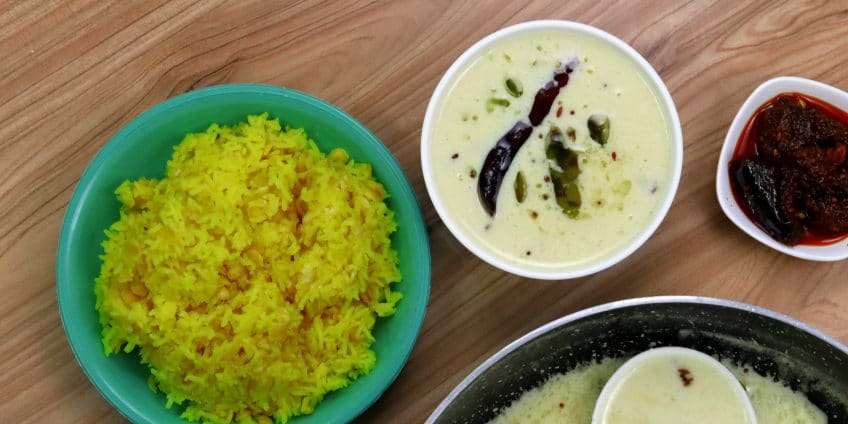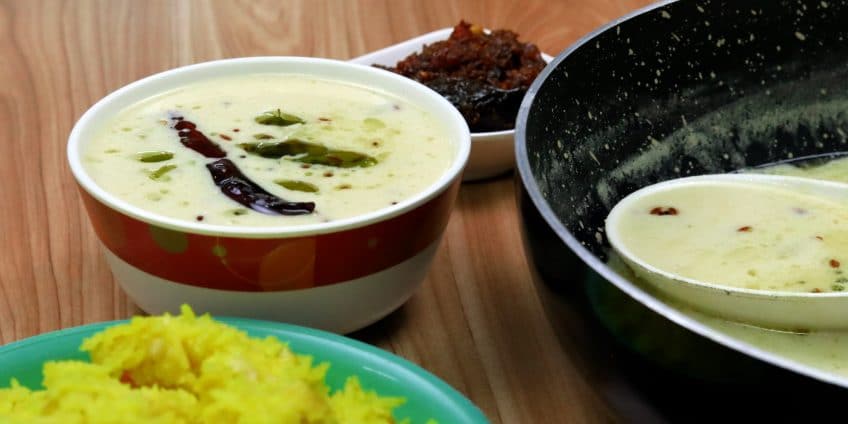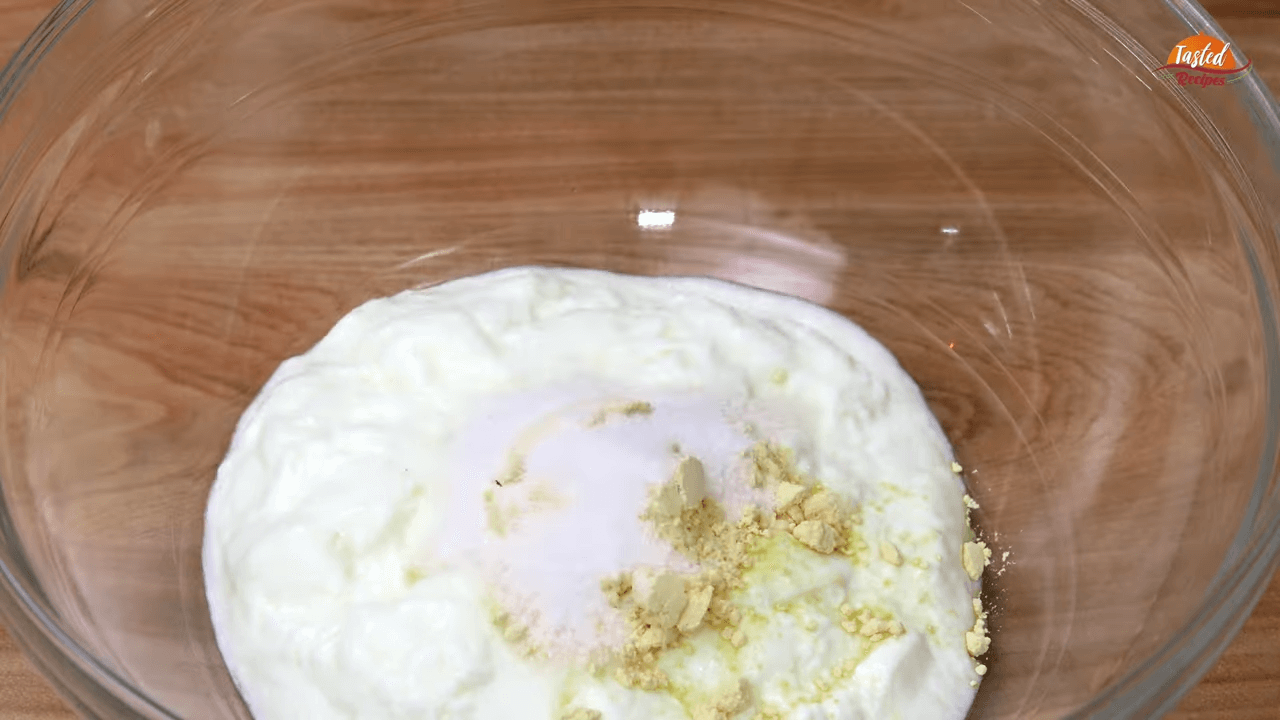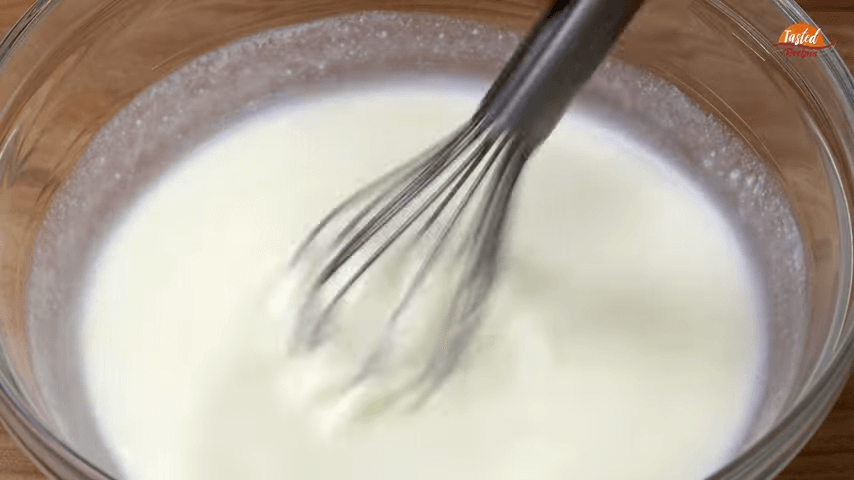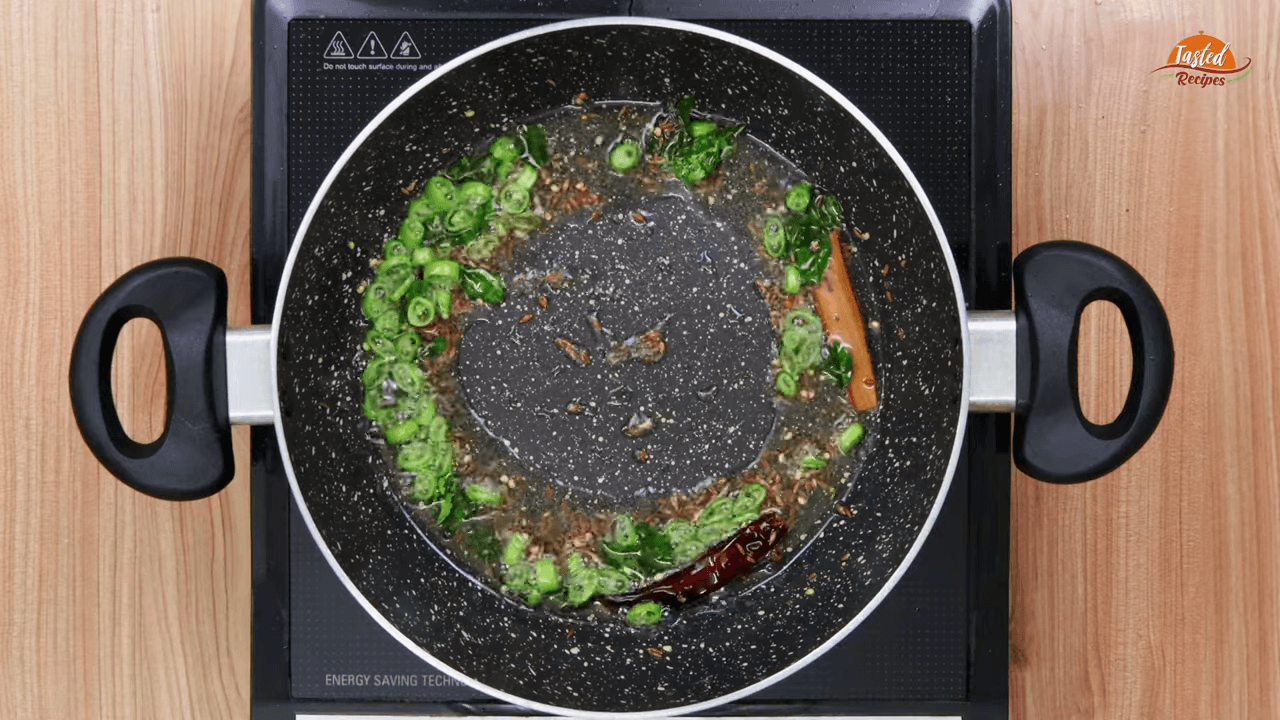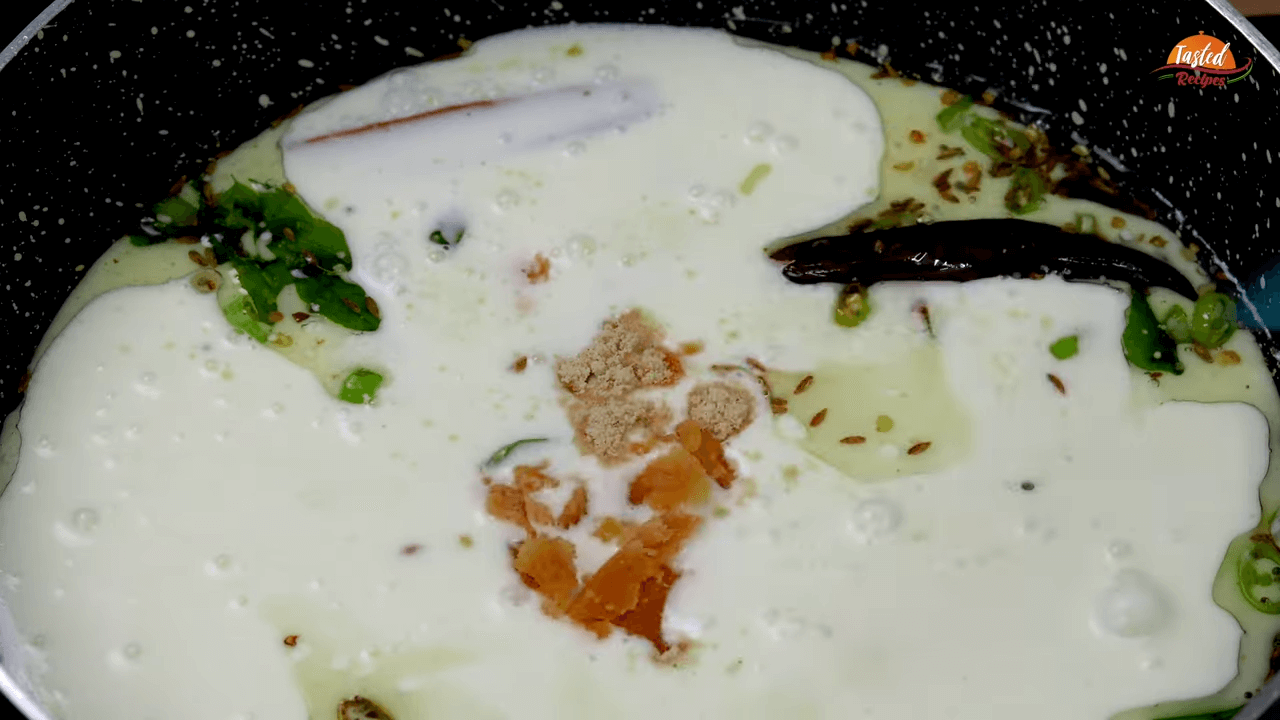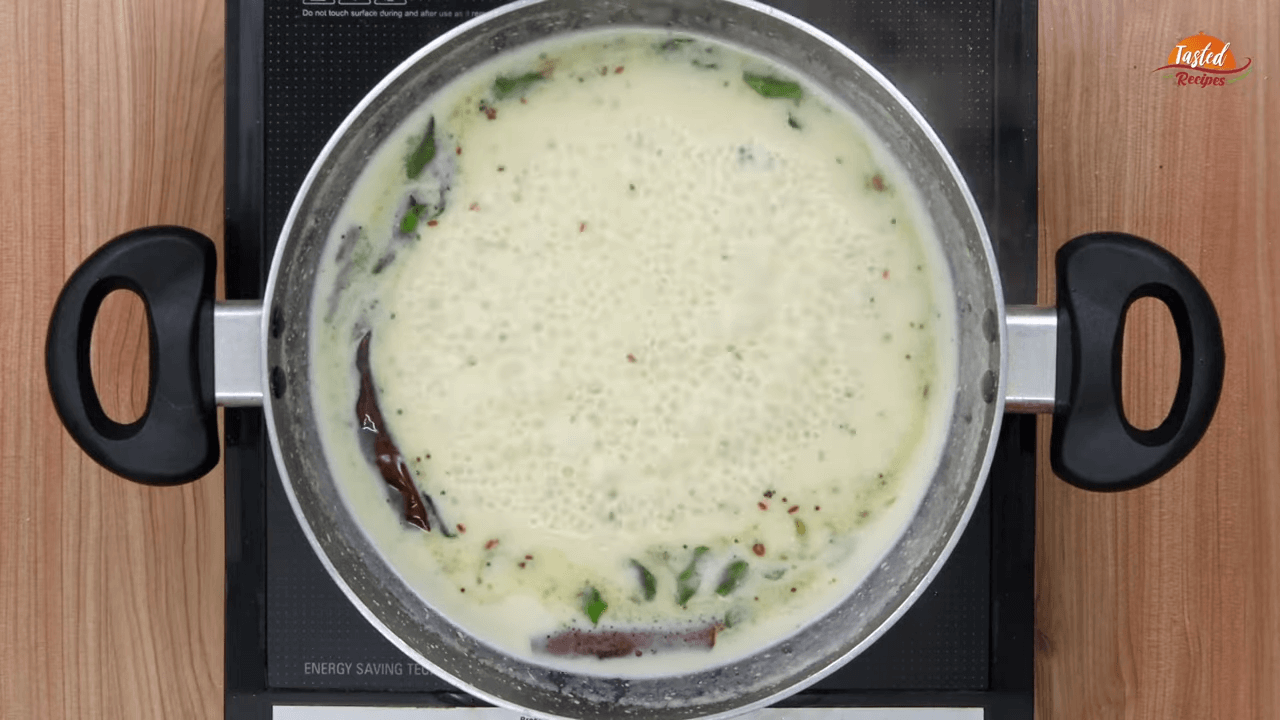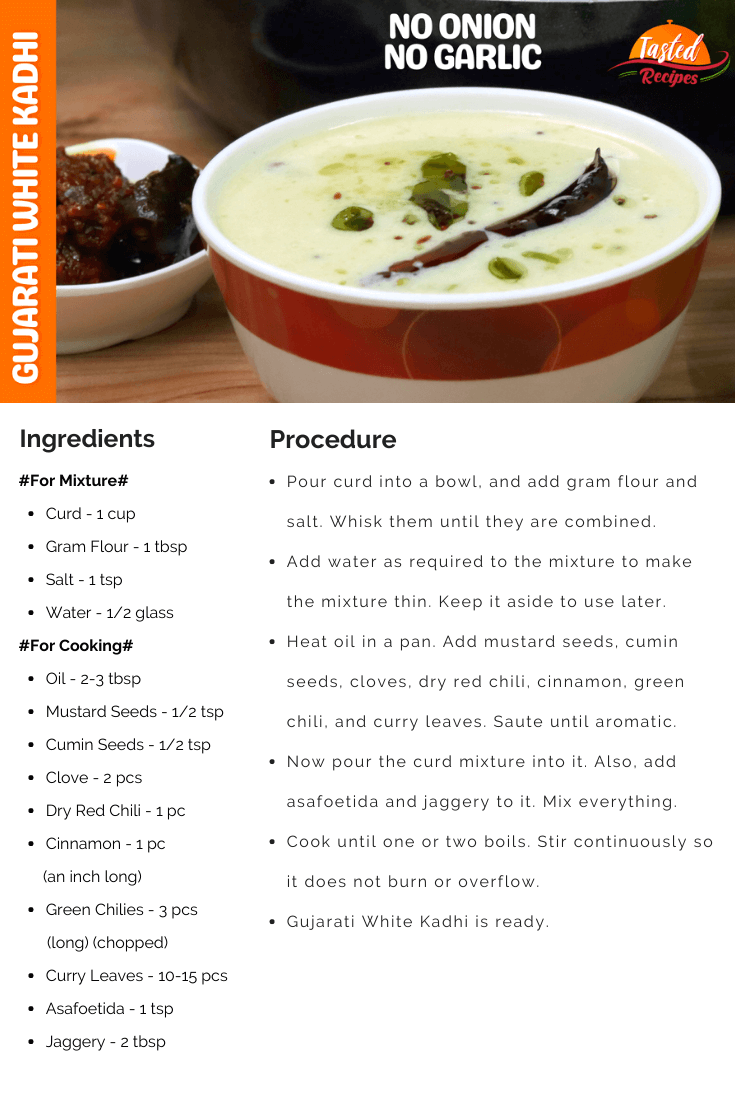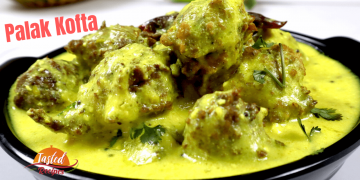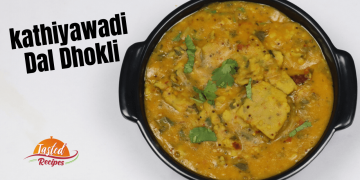The Gujarati white kadhi is a spectacular recipe from the gourmet of Gujarati cuisine. For ages, the Gujarati community has made and consumed this curd-based delicacy. It is sweet and tangy in taste.
Being a Gujarati, I know the importance of kadhi in daily meals. It is one of the comfort foods, just like dal and rice. Kadhi is mainly consumed with khichdi or sometimes with roti. And during summer, this comfort food is accompanied by Mango Pickle. It can also be an excellent tiffin recipe.
On top of it, this single recipe offers a wide variety of variations. In other words, one can make different types of Gujarati kadhi. Yes, you heard that right.
Let me tell you what they are.
Gujarati Kadhi Variations
Kadhi is a mixture of gram flour mixed in curd and then tempered (tadka). Yeah, it’s that easy. But there are a few variants of this easy-peasy recipe.
Yellow Kadhi
In the yellow kadhi, there’s turmeric powder. Haldi powder gives the Gujarati kadhi yellow colour. Moreover, this will never have a sweetening agent, and the base is slightly different from white kadhi.
To know the difference more in detail, you can refer to the Gujarati Yellow Kadhi recipe.
White Kadhi
White kadhi is a buffet item mainly served in marriage functions. So just skip the turmeric powder & your white kadhi is ready.
Authentic Gujarati style white Kadhi is generally made from curd, whereas in yellow kadhi, we use buttermilk.
I have made this kadhi variation for you today.
Khatti-Meethi Kadhi
Sweet & sour kadhi is because of the curd & sugar. But this kadhi is mildly sweet & not sweet like jalebi or rasgulla. It’s a myth that Gujaratis make their dal, kadhi & sabji sweet. Nope. They, too, love spicy teekha & masaledar.
TR’s Extra Shot For Gujarati White Kadhi
- Sweetness – Please do not overdo sweetening the Kadhi. All we need is just a little bit of sweet taste. Jaggery is best to use, but rock sugar can also be a substitute.
- Curd – Generally, we use the regular non-sour curd to make this dish. But if you like Kadhi sour like me, you can use sour curd for this. Or use sweetened curd and skip the sweetening agent.
- Asafoetida – This ingredient is primarily used in the Gujarati dal recipes. However, we are using it here for a taste. You can skip this if you want.
- Fritters – People often eat this kadhi as a dip by combining it with gram flour pakoda (fritters). It is a great combination to enjoy.
- Kasuri Methi – We are not using that here. But just for some aroma, you can add it a little.
Frequently Asked Questions
Can I make Gujarati White Curry vegan?
We now have options to make this recipe in a vegan version.
First, you need to replace the curd with its non-dairy version to make this. If not that, then use almond milk or cashew yoghurt instead.
However, remember to cook it on low heat and not boil the kadhi; the yoghurt can get curdled or separated.
How to make the kadhi sourer?
To make the kadhi sourer, you can use sour curd as an option. But if that is not enough, you can add some lemon juice, vinegar, or raw mango powder.
How long can this kadhi is edible?
Kadhi does not tend to last long even after being adequately cooked. However, if you leave it at room temperature, it will be good until 24 hours.
If refrigerated properly, then it will last for 48 hours. But not more than this. It will have a stale smell if it turns bad for consumption.
Why is my kadhi bitter?
If your kadhi turns bitter, then the ingredients you used are to blame. Either the curd was sore, or the besan (gram flour) had exceeded the shelf life.
Why is the kadhi split?
The reason behind the kadhi split lies in the fact that how curd was kept beforehand. If the curd was at a chilling temperature before cooking it on flames, it can curdle the curd or separate it. Therefore, ensure it is at room temperature and stir the kadhi while boiling it to avoid such incidents.

